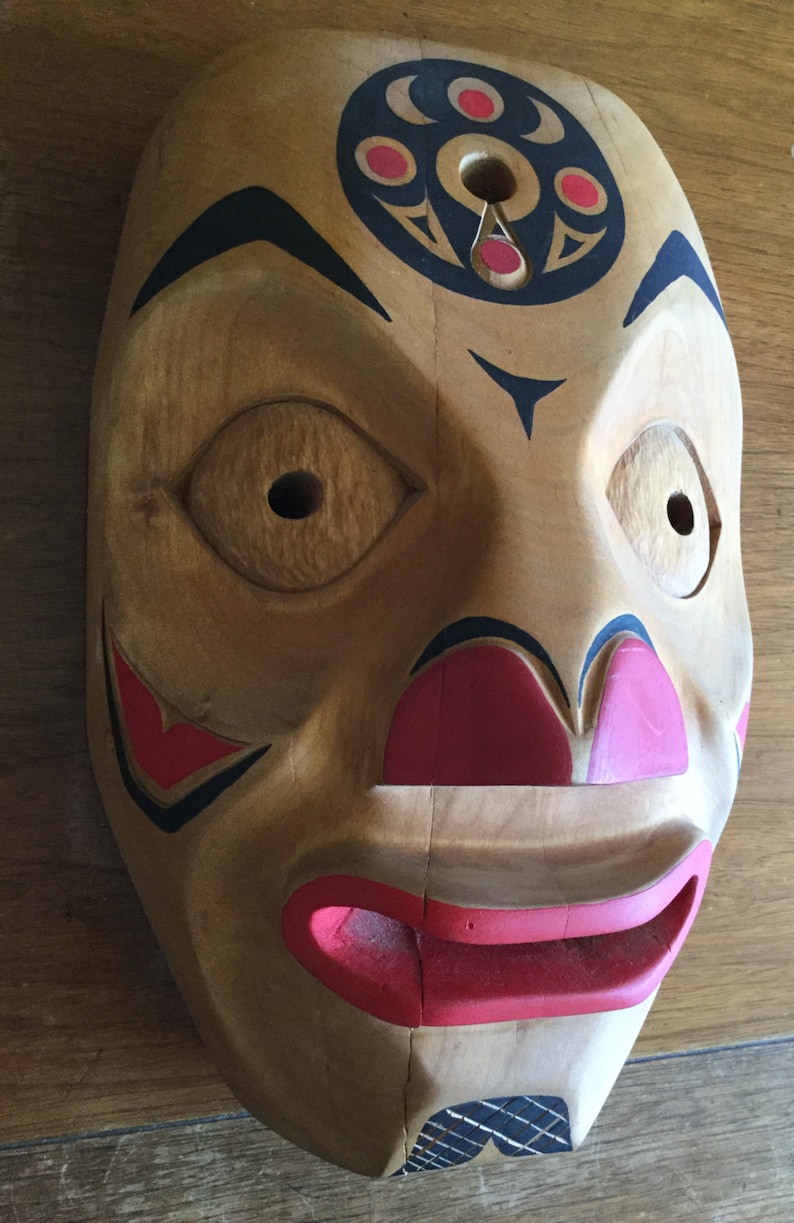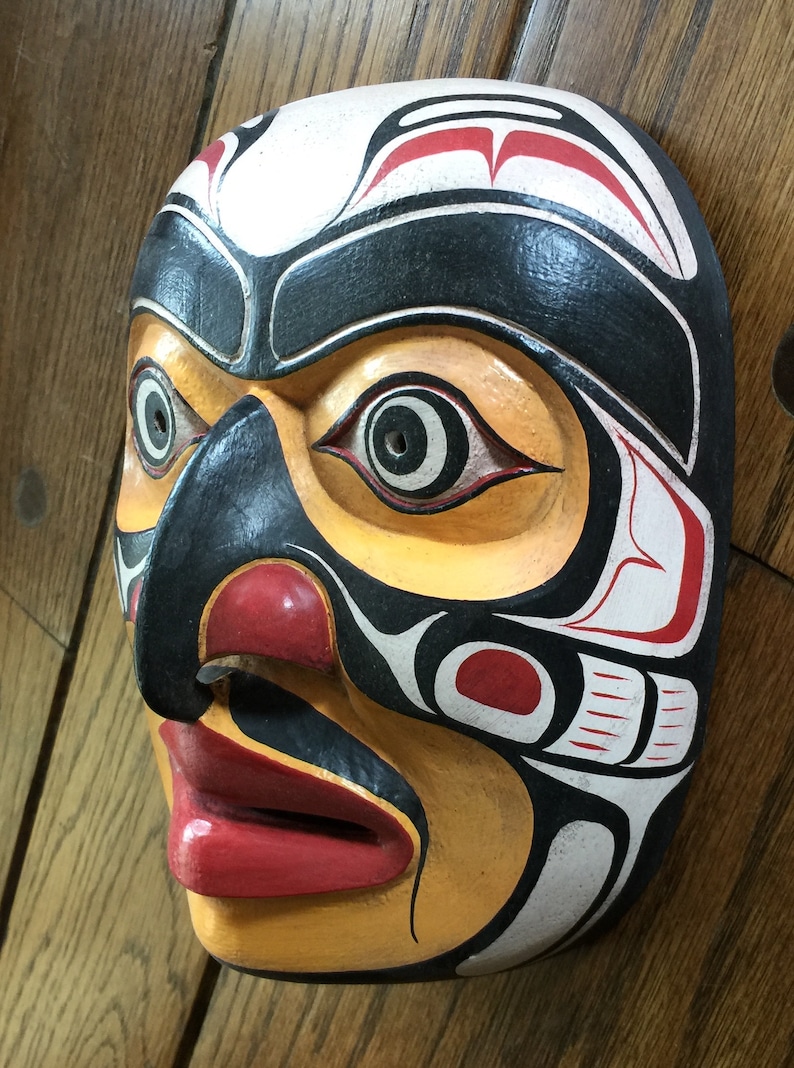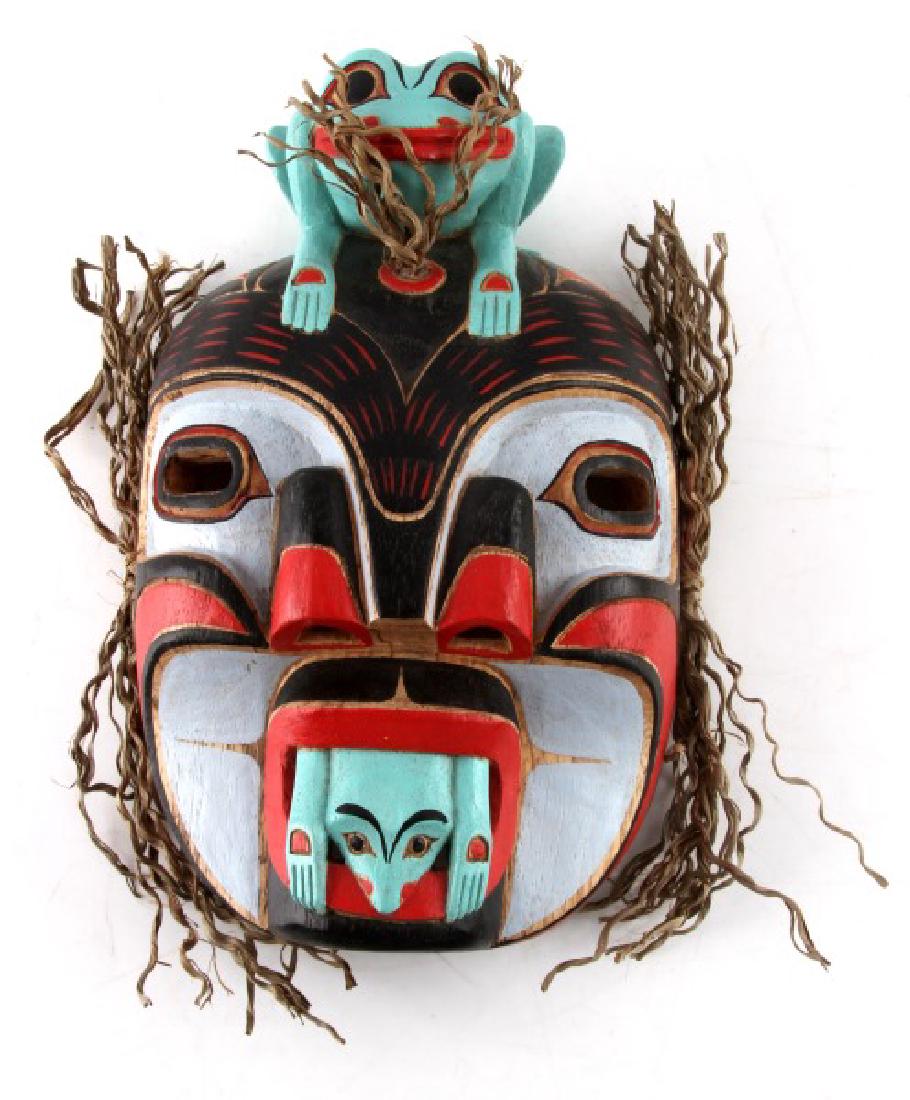
Echoes of Cedar and Spirit: The Enduring Art of Pacific Northwest Ceremonial Mask Carvers
In the dense, mist-shrouded forests of the Pacific Northwest, where ancient cedars stand sentinel, a profound artistic and spiritual tradition has thrived for millennia. This is the realm of the ceremonial mask, not merely an object of art, but a living embodiment of culture, spirit, and history for Indigenous peoples from the Coast Salish territories to the northern reaches of the Tlingit and Haida. These masks are portals to the spiritual world, tools for storytelling, and vibrant expressions of identity that continue to captivate and educate.
The tradition of mask carving in the Pacific Northwest is deeply rooted in the cosmology and social structures of nations such as the Kwakwaka’wakw (Kwakiutl), Nuu-chah-nulth (Nootka), Haida, Tlingit, Tsimshian, Gitxsan, and Coast Salish. For these communities, masks are not static museum pieces but dynamic participants in ceremonies, particularly the Potlatch – a complex system of feasting, gift-giving, and public declarations of lineage, rights, and status. Before the infamous Potlatch ban, enforced by the Canadian government from 1884 to 1951, masks were central to these vital cultural exchanges, transforming dancers into mythical beings, ancestors, or animal spirits.
A Language of Formline and Spirit
The visual language of Pacific Northwest masks is instantly recognizable, characterized by its distinct "formline" elements – ovoids, U-forms, and S-forms – that flow together to create powerful and often symmetrical designs. These aren’t just decorative motifs; they are a sophisticated system of artistic expression that conveys meaning, identity, and narrative. Animals such as the Raven, Bear, Wolf, Eagle, Killer Whale, and Beaver are frequently depicted, each carrying specific symbolic weight and often representing ancestral crests or spiritual guardians. Human faces, sometimes combined with animal features, speak to themes of transformation and the interconnectedness of human and non-human realms.
The choice of materials is as significant as the design. Red cedar (Thuja plicata) is the undisputed king of carving woods, revered for its strength, workability, and spiritual properties. Its straight grain, relative softness, and resistance to rot make it ideal for intricate carving, while its natural oils imbue it with a distinctive aroma. Yellow cedar (Cupressus nootkatensis) is also favored for finer details due to its tighter grain. Traditional pigments – derived from minerals like ochre for red and charcoal for black, often mixed with salmon roe as a binder – gave way to commercial paints, but the color palette of red, black, white, and sometimes blue-green remains iconic, each color carrying its own symbolic weight. Red often signifies lifeblood and generosity, black for power and mystery, white for purity and the heavens.

The Master Carver: A Conduit of Tradition
Becoming a master carver is a lifelong journey, often beginning in childhood and requiring rigorous apprenticeship under an experienced elder or relative. It is a path not just of technical skill, but of deep cultural knowledge and spiritual understanding. "Each cut, each stroke, is a prayer," explains a Kwakwaka’wakw master carver, reflecting on his craft. "We are not just shaping wood; we are shaping spirit, giving form to our ancestors’ stories. A mask is never truly finished until it dances, until it is brought to life by the human spirit within it."
The tools of the trade, too, bridge the ancient and the modern. Traditional tools like the adze, crooked knife, and chisels, often with blades fashioned from bone or shell in pre-contact times, are still used by many carvers, valued for the unique textures and control they offer. These are often complemented by modern tools like power saws and specialized grinders, demonstrating the adaptability and evolution within the tradition. The process is painstaking: a rough block of cedar is slowly transformed, its contours emerging under the skilled hands of the carver, guided by generations of ancestral knowledge.
Perhaps the most astonishing examples of this artistry are the Kwakwaka’wakw transformation masks. These intricate creations feature hinged components that, with a tug of a string, open to reveal a hidden inner face, often transforming an outer animal form into a human or another spirit. This dramatic metamorphosis during a dance is a powerful representation of the fluid boundaries between the physical and spiritual worlds, and the ability of beings to shift their forms. It’s a breathtaking theatrical device, underscoring the dynamic, performative nature of these masks.
Resilience Through Adversity: The Potlatch Ban and Revival
The cultural landscape of Pacific Northwest Indigenous peoples faced an existential threat with the Canadian government’s Potlatch ban. Driven by assimilationist policies, the ban aimed to suppress Indigenous cultures, mistakenly viewing ceremonies like the Potlatch as obstacles to "civilization." Masks, as central elements of these ceremonies, were confiscated, destroyed, or driven underground. Families risked imprisonment to hide their sacred objects, safeguarding them for future generations.
Despite this devastating period, the spirit of the mask endured. Knowledge was passed down secretly, designs memorized, and stories whispered. When the ban was finally lifted in 1951, a cultural resurgence began. Elders, artists, and communities worked tirelessly to reclaim their heritage. Museums, once repositories of confiscated items, began to repatriate masks and other cultural artifacts, a process that continues today, allowing these powerful objects to return to their rightful homes and contexts.
This period of revival saw a renewed interest in traditional carving techniques and designs, often led by figures like Mungo Martin (Kwakwaka’wakw), whose efforts in the mid-20th century were crucial in preserving and revitalizing the art form. His legacy, and that of many others, inspired new generations of carvers to pick up the adze and chisel, ensuring the continuity of these vital traditions.
Contemporary Challenges and the Path Forward

Today, Pacific Northwest mask carvers navigate a complex world of tradition and modernity. While there is immense pride in carrying forward an ancient art form, challenges persist. Cultural appropriation, where Indigenous designs are used without understanding or permission, remains a concern. The commercialization of masks, particularly for the tourist market, also raises questions about the balance between economic sustainability for artists and the sacred integrity of the objects.
However, there are also triumphs. Contemporary carvers are not simply replicating old designs; they are innovating, bringing their own perspectives while respecting traditional forms. They are using their art to tell contemporary stories, address social issues, and assert Indigenous identity in new and powerful ways. Education plays a crucial role, with artists actively teaching younger generations and engaging with broader audiences to foster understanding and respect. "Our masks are not just for us; they are for the world to see the resilience of our spirit," states a Gitxsan artist involved in youth programs. "They carry our history, our values, and our hopes for the future. Passing this on is the most important carving I do."
The digital age offers new avenues for sharing and preserving knowledge, while repatriation efforts continue to bring masks home, restoring their power within their communities. The enduring demand for high-quality, authentic masks, both for ceremonial use and for appreciation as fine art, fuels a vibrant community of carvers.
The Enduring Power
The ceremonial masks of the Pacific Northwest are far more than beautiful objects. They are dynamic cultural archives, embodying the spiritual beliefs, social structures, and historical narratives of Indigenous nations. They are a testament to the resilience of cultures that have faced immense adversity, and a vibrant symbol of ongoing cultural revitalization. As the mist still rolls through the ancient cedar forests, the echoes of the adze and the whispers of ancestral spirits continue to shape wood, ensuring that these powerful, transformative masks will dance for generations to come, connecting past, present, and future in a timeless circle of art and spirit.